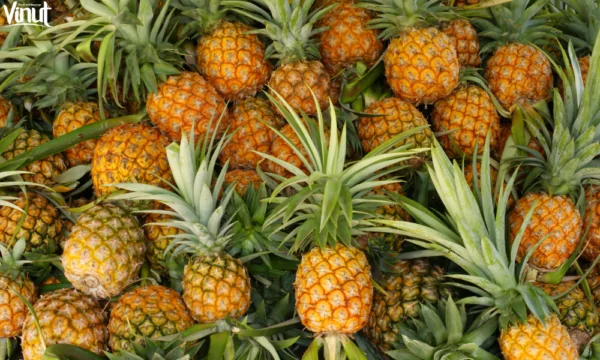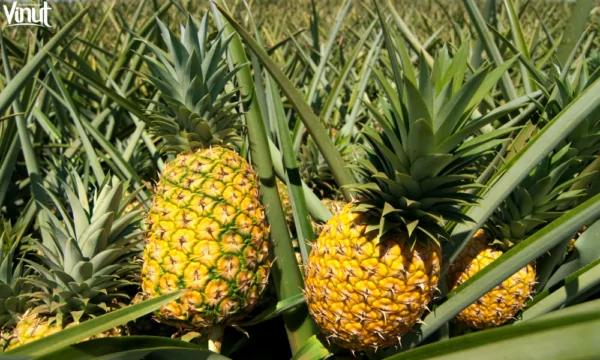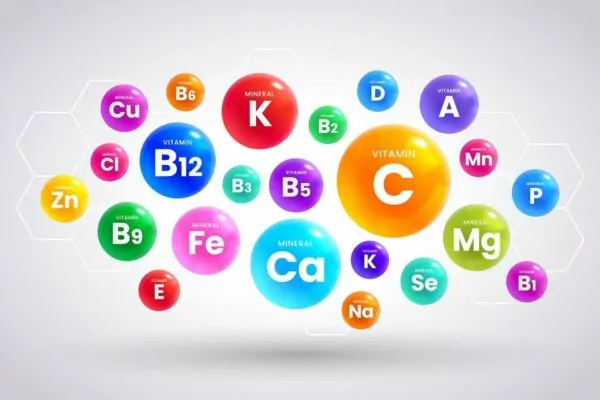Pineapples: Exploring the 5 Wonderful Advantages
In this article, VINUT will delve deep into the world of pineapples, exploring their origins, cultivation, health benefits, and culinary applications.
The Pineapple’s Tropical Roots
Pineapples, scientifically known as Ananas comosus, are native to South America, particularly in the region that spans from southern Brazil to Paraguay. These spiky wonders have a long history, with evidence of their cultivation dating back as far as 2,800 years. The indigenous people of South America, such as the Guarani tribe, were among the first to cultivate and appreciate the deliciousness of pineapples.

European explorers, including Christopher Columbus, encountered pineapples during their voyages to the Americas. The fruit’s unique appearance and exquisite taste left a lasting impression, leading to its introduction to Europe and other parts of the world. It wasn’t long before pineapples became a symbol of luxury and hospitality in Europe, often gracing the tables of royalty.
Pineapple: A Tropical Marvel
The pineapple plant is a fascinating botanical specimen. It belongs to the Bromeliaceae family and is actually a composite of multiple flowers that fuse together to form the fruit. The outer shell of the pineapple is covered in a rough, spiky skin, while the inner flesh is succulent and juicy, ranging from golden yellow to bright orange in color.

One of the most distinctive features of a pineapple is its crown of spiky leaves, which can be used to propagate new plants. Pineapple plants are perennials, and a single plant can produce multiple fruits over its lifetime. The fruit itself is known for its sweet and tangy flavor, with a perfect balance of acidity that makes it a favorite in both sweet and savory dishes.
Cultivating Pineapples: From Farm to Table
Cultivating pineapples is a labor-intensive process that requires patience and expertise. Pineapple plants are typically grown in tropical and subtropical regions with well-draining soil and plenty of sunlight. They can be cultivated from the crown of a mature pineapple or by planting the “slips” or shoots that grow at the base of the plant.

It takes about 18 to 24 months for a pineapple plant to bear fruit. Once the fruit is ready for harvest, it is carefully handpicked to ensure its quality. Pineapples do not continue to ripen after they are harvested, so selecting a ripe one at the store is essential for enjoying its sweet flavor.
The Health Benefits
1. Rich in Vitamin C
Pineapples are a great source of vitamin C, which is known for its immune-boosting properties. A single cup of pineapple chunks can provide more than your daily recommended intake of vitamin C, helping your body fight off infections and promote healthy skin.

2. Anti-Inflammatory Properties
Pineapples contain bromelain, an enzyme that has anti-inflammatory properties. Bromelain has been used to reduce swelling and pain associated with conditions like arthritis, making pineapples a potential natural remedy for inflammation.

3. Digestive Aid
Bromelain in pineapples also aids in digestion by breaking down proteins in the digestive tract. This can help alleviate digestive issues and promote a healthy gut.

4. Rich in Antioxidants
Pineapples are packed with antioxidants, which can help protect your cells from damage caused by free radicals. Antioxidants play a role in reducing the risk of chronic diseases.

5. Rich in Nutrients
Pineapples are low in calories but boast an impressive nutrient profile. They are particularly rich in vitamin C and manganese, along with other vitamins and minerals like vitamin B6, copper, thiamine, folate, and magnesium.

Pineapple in the Kitchen
1. Tropical Smoothies
Blend pineapple chunks with coconut milk, banana, and a handful of spinach for a refreshing tropical smoothie that’s both nutritious and tasty.

2. Grilled Pineapple
Grilling pineapple slices caramelizes the sugars and intensifies the flavor. Serve them as a side dish or a topping for grilled meats.

3. Pineapple Salsa
Combine diced pineapple with red onion, jalapeño, cilantro, lime juice, and a pinch of salt to create a vibrant and flavorful pineapple salsa. It’s perfect for topping grilled chicken or fish.

4. Pineapple Juice
Pineapple juice is a popular tropical beverage made from the fruit of the pineapple plant. It’s known for its sweet, tangy flavor and its vibrant, golden-yellow color. The juice is extracted from the pulp of the pineapple, which contains a rich array of nutrients and enzymes.

